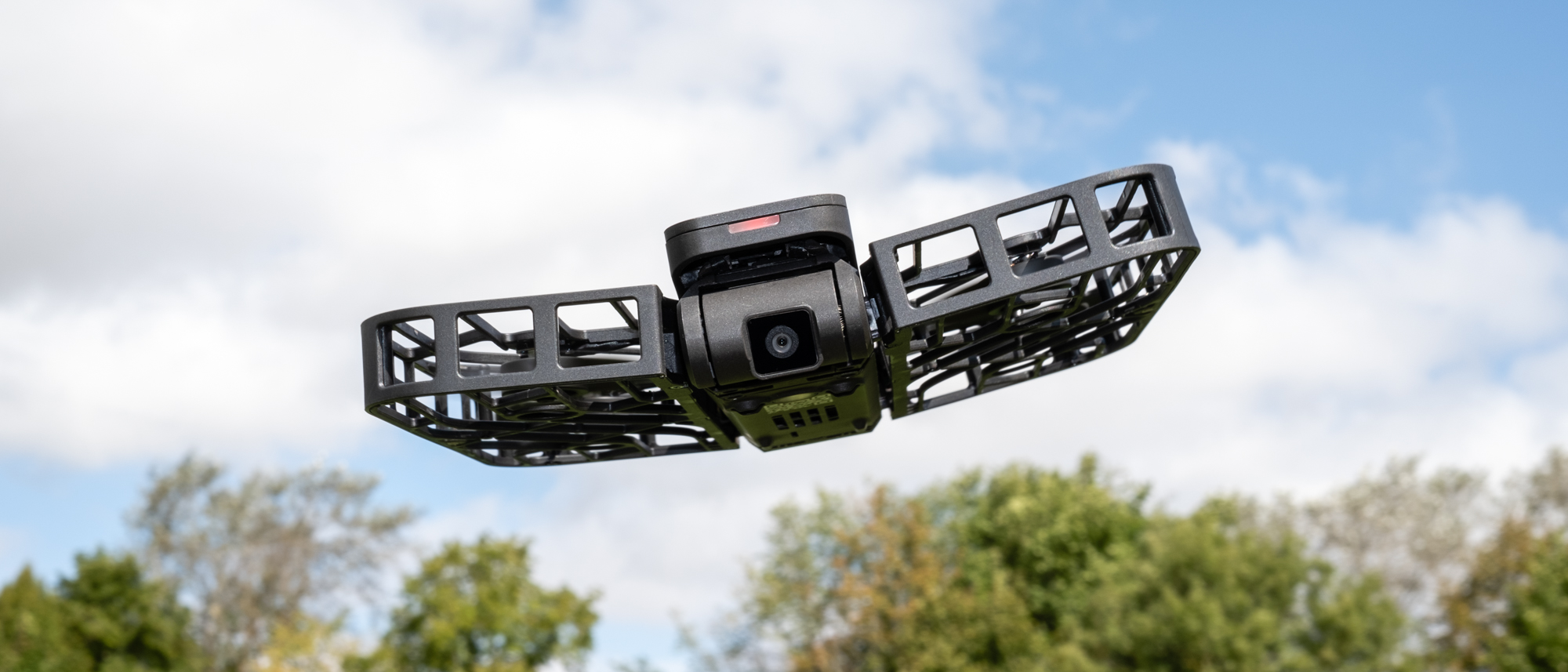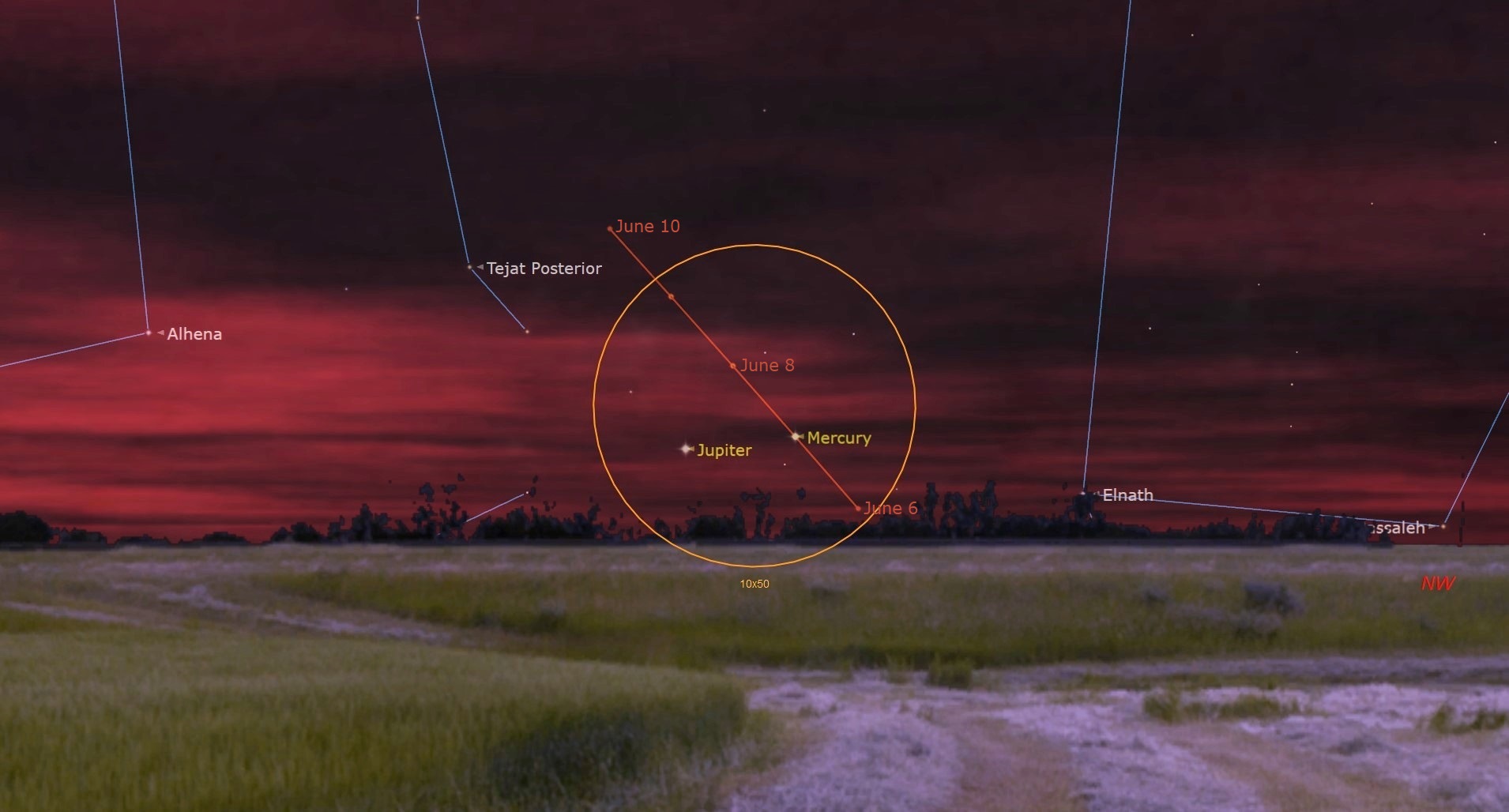Space Verdict
The HoverAir X1 breaks the mold by delivering excellent subject tracking capabilities in a palm-size autonomous drone that's easy to use for capturing yourself in photos and videos.
Pros
- +
Incredibly easy to use
- +
Palm take-off and landing
- +
Intelligent subject tracking
Cons
- -
It's not inexpensive
- -
Manually controlled flight isn't great
- -
Video is limited to 2.7K
Why you can trust Space.com
Every once in a while, something new comes along that offers consumers a product that breaks the norm, and with the Zero Zero Robotics HoverAir X1, that's exactly what we have. The HoverAir X1 is an autonomous selfie drone that uses intelligent tracking algorithms to successfully track both moving and static subjects with impressive results. It also provides the ability to fly manually to capture photos and videos, although with limited control available the X1 is all about tracking the user rather than capturing the world from above.
Camera: 19mm equivalent f/2.4
Video resolution: 2.7K & 1080p (FHD)
Frame rates: 2.7K at 30fps, 1080p at 60fps and 1080p (HDR) at 30fps
Weight: 4.4 oz / 125g
Flight Modes: Orbit, Follow, Reveal, Overhead, Hover, Custom & Manual Control
Compatible with: Android & iOS
The X1 is aimed more at personal than professional use due to the limitations of the camera, which tops out at 2.7K at 30 fps for video, but it could also be a great option for content creators who regularly film themselves. This makes it one of the best beginner drones available, and as a result of its unique features and functionality, it could potentially be one of the best camera drones. It's certainly not up to the standard of more advanced camera drones in terms of camera functionality and photo and video capture, but the X1 is leagues ahead for safety and tracking capabilities.
There's a lot to talk about, but before we dive into the detail it's worth taking a quick look at what you get in the HoverAir X1 kits and how much they cost. The X1 is available in black or white and comes in two kit options. These include Device Only, which includes one battery, a USB-C cable for charging and a drawstring bag for storage and transportation and costs $349 / £345 / €388. The Combo kit includes all of the above, a two-battery Charging Hub and a second battery for $399 / £395 / €448.
HoverAir X1 drone review
HoverAir X1 review: Design
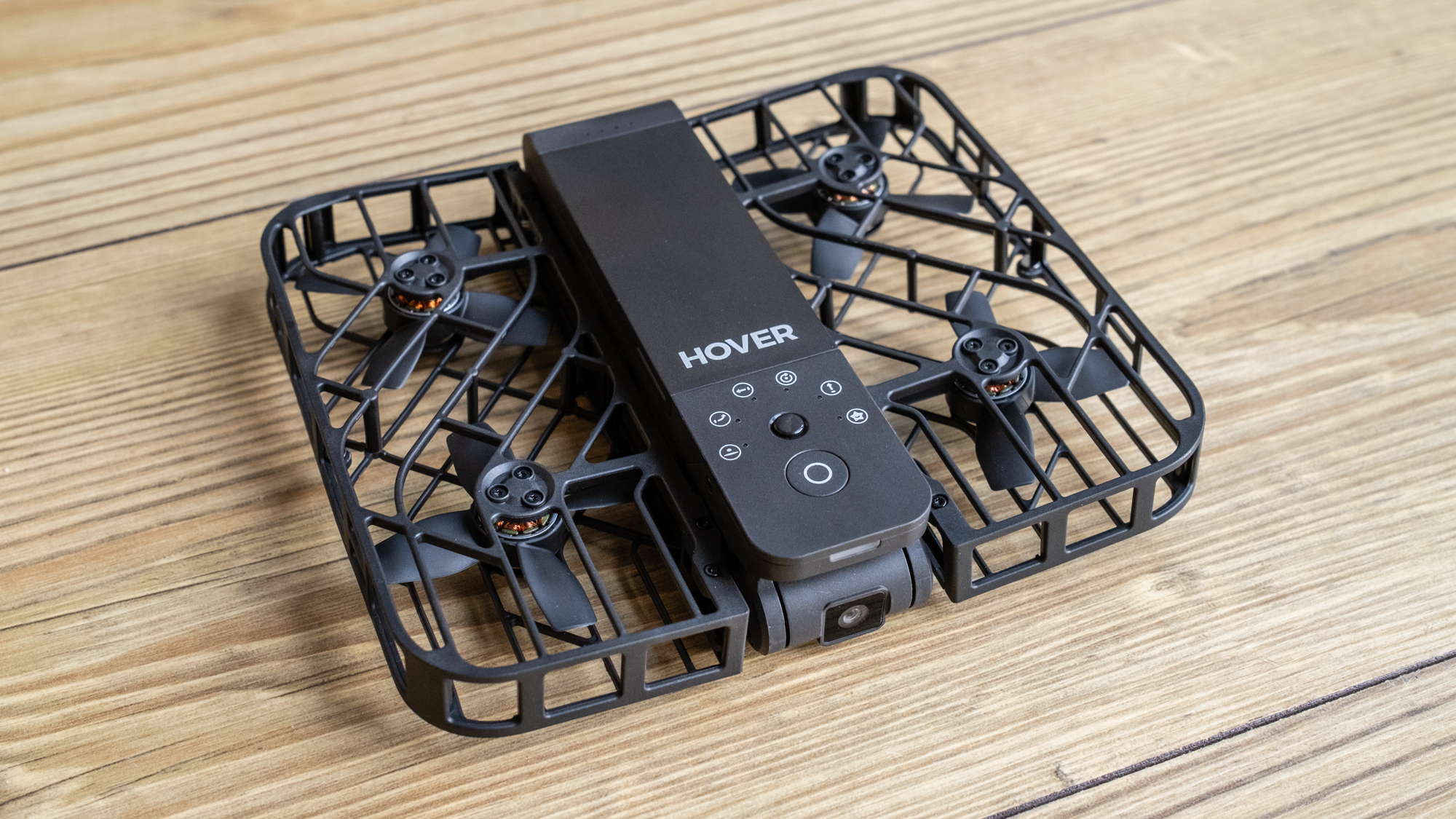
- Folding design
- Pocket-size
- Weighs just 4.4 oz / 125g
The HoverAir X1 is extremely small and lightweight, and with a folding design, it's also compact for transportation. It's advertised as being pocket size, and it could easily fit into a jacket pocket, a handbag or any other type of bag. Folded, the X1 is just 5 x 3.4 x 1.2 in (127 x 86 x 31 mm), and it expands to 5 x 5.7 x 1.2 in (127 x 145 x 30 mm) when unfolded for flight, with a weight of just 4.4 oz (125g) including a battery.
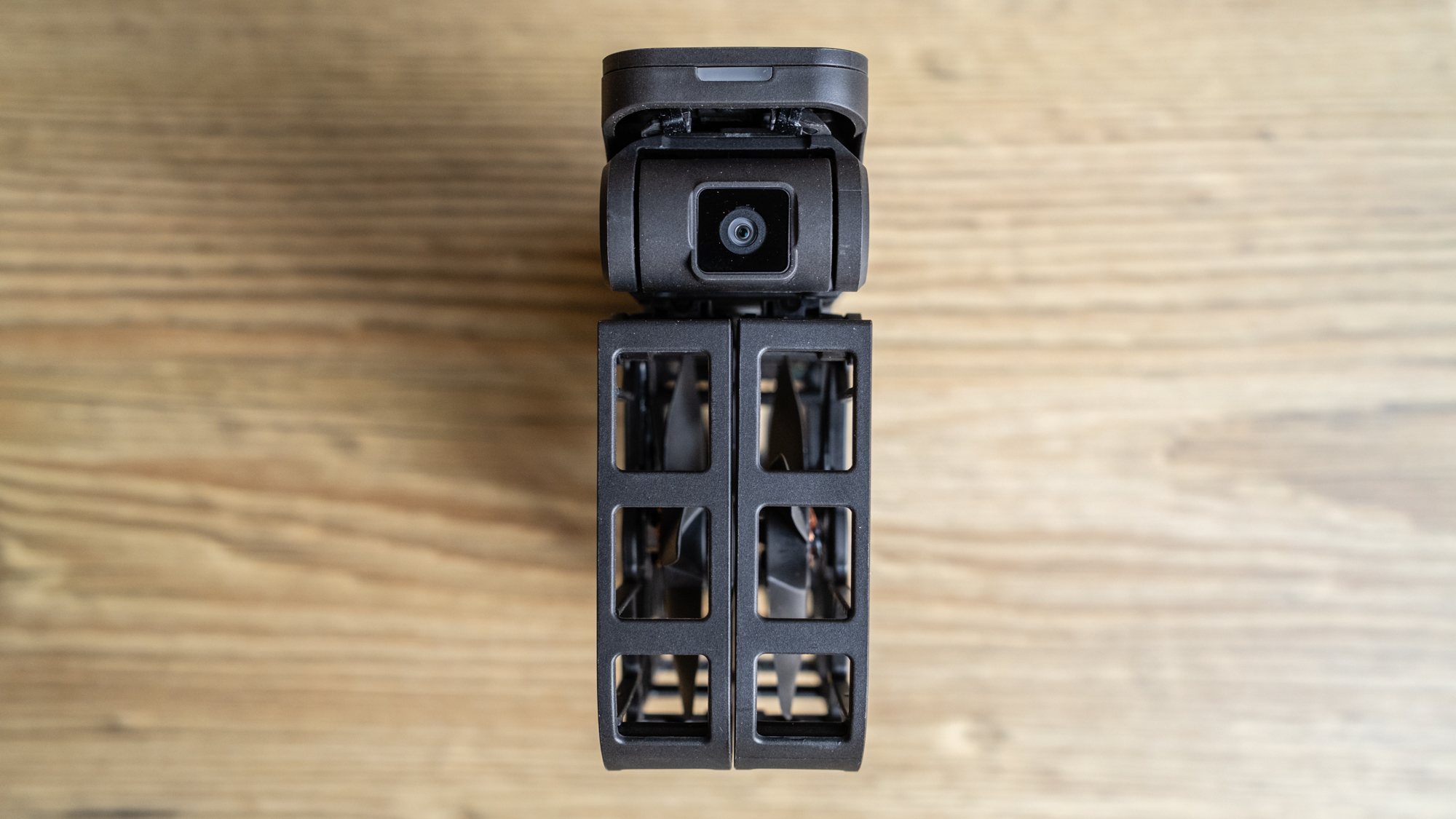
When folded, the X1 is tall and narrow and the two propeller enclosures simply need to be pulled up and outwards to prepare the drone for flight, where it becomes flatter and wider.
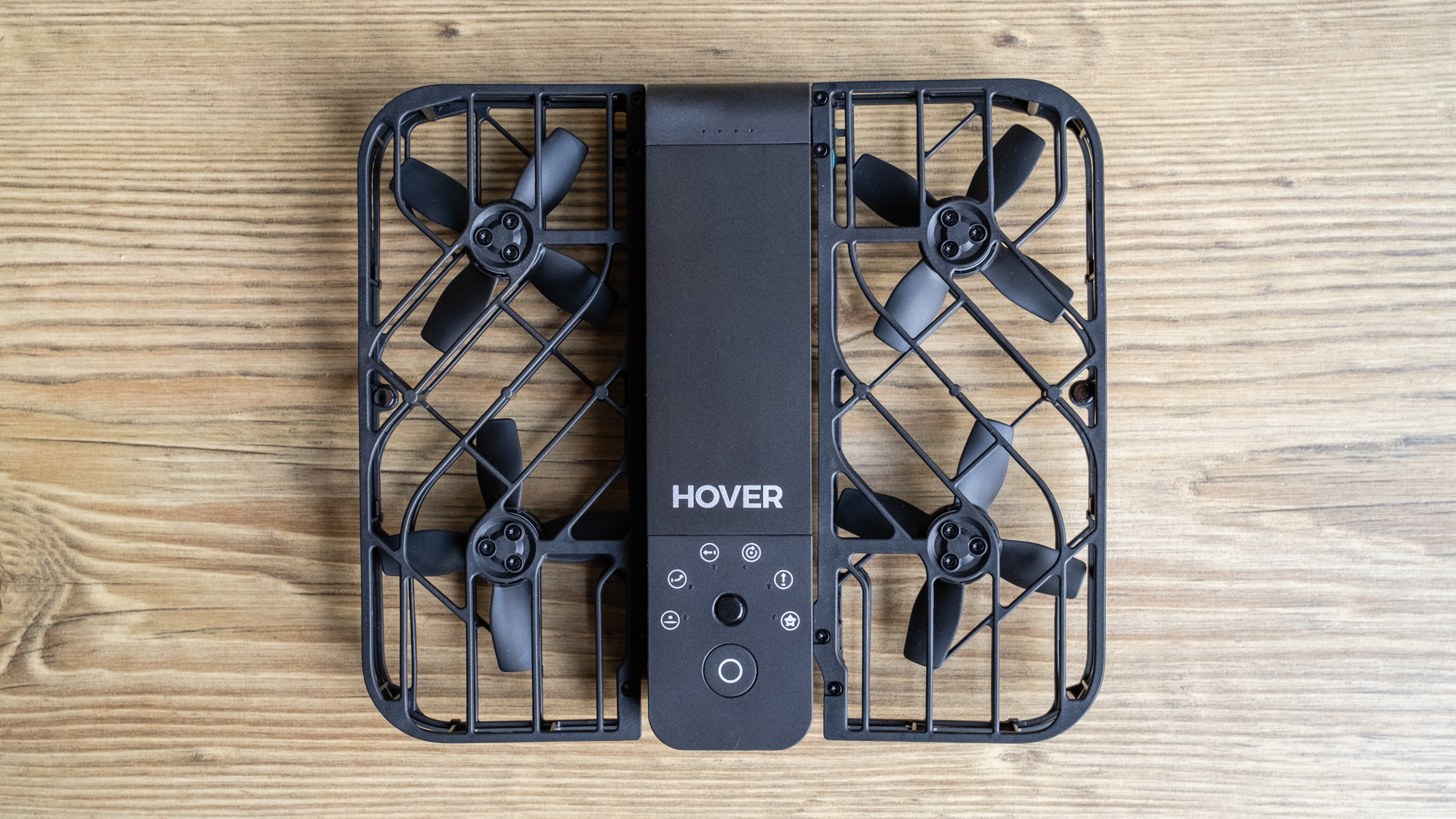
The propellers are enclosed within a frame to protect the user during take-off and landing from the palm of your hand, as well as providing safety when the drone is flying close to people or indoors. On the top of the X1, there are simply two buttons: one that doubles as a power button and take-off/start button and a second that allows you to select the intelligent flight path/flight mode you'd like to use. The battery life is advertised at 11 minutes but typically comes in at around 9-10 minutes. It's not long in drone terms, but it is enough for the X1 and the way it's used.
HoverAir X1 review: Functionality
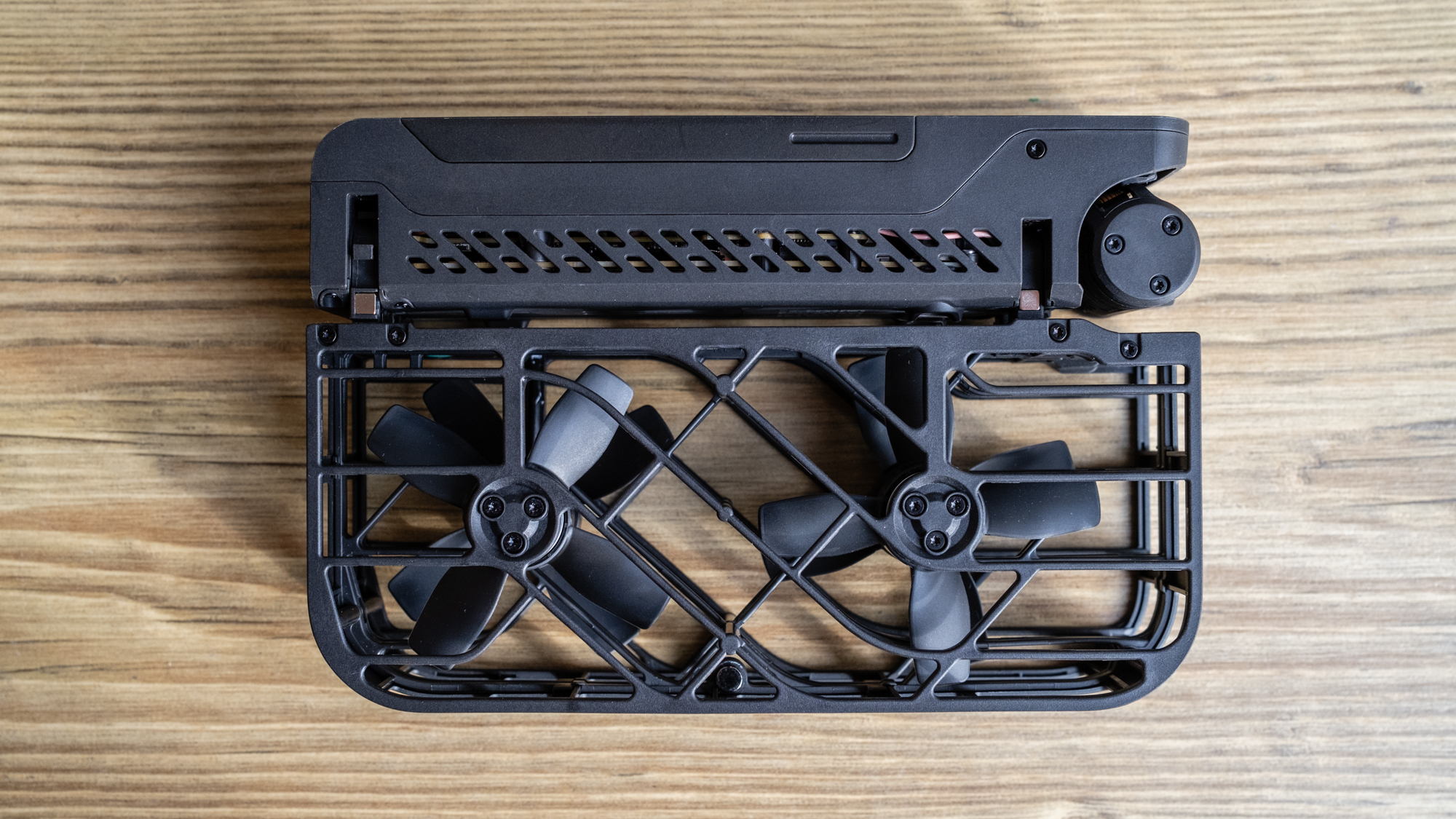
- Quick setup time
- Easy to use
- Intuitive controls
The Hover X1 app for Android and iOS is easy to navigate and generally intuitive to use. Once the X1 has been activated within the app, you can use the app to select intelligent flight paths and some flight path parameters, including altitude and subject distance. The beauty of the X1 is that once it has been activated, you can use it without the app for faster setup and shooting.
In this situation, any photos and videos captured will be downloaded via the X1's WiFi when the drone and app are next connected. The WiFi connection is also used between the X1 and the app/smartphone for Manual Control where you fly the X1 more like a traditional camera drone.
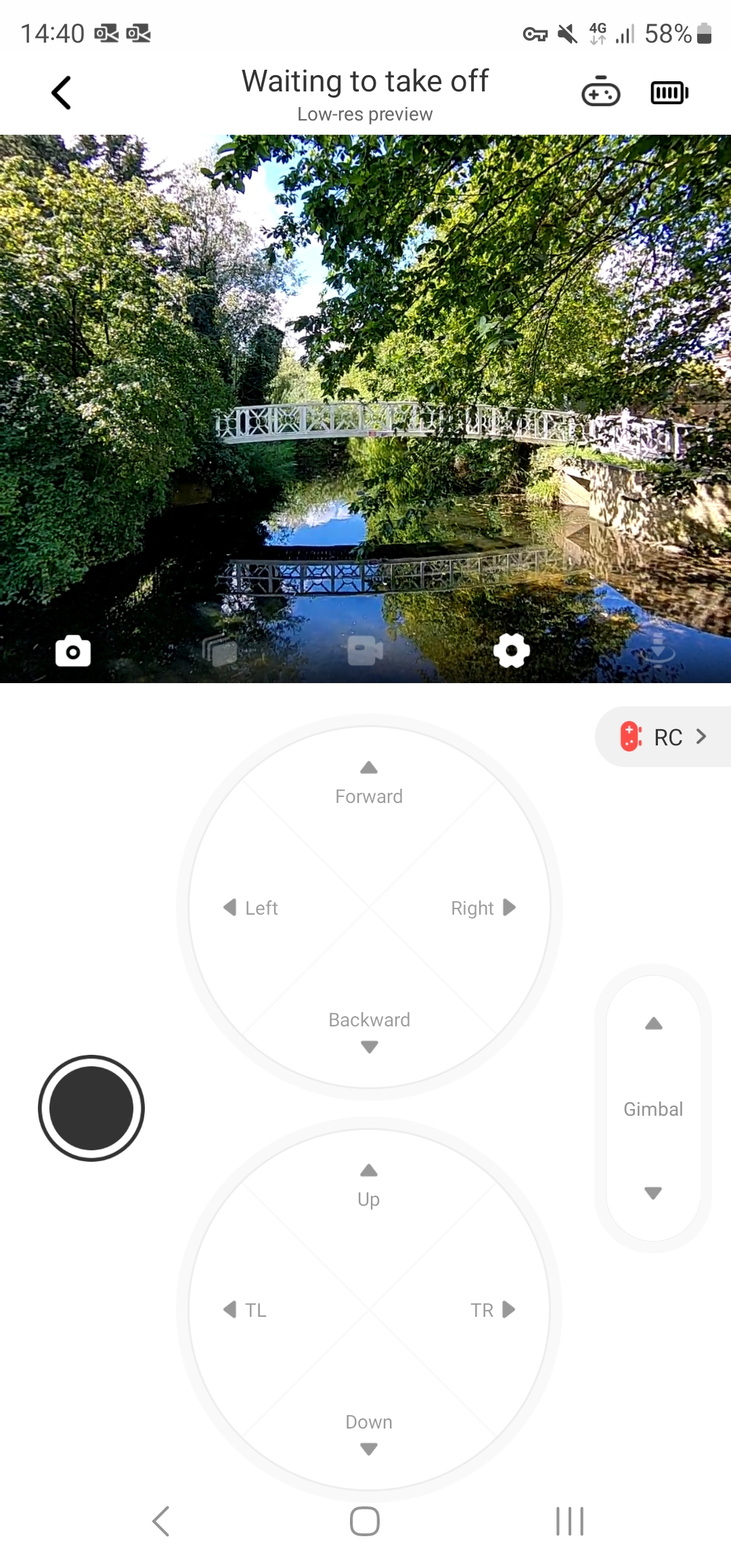
Control is achieved using on-screen controls in a vertical format with the camera view at the top and the two virtual controllers stacked vertically. It works, but it's not great, and it would be much more effective if the camera view took up the whole screen in landscape format with the virtual controls overlaid on the left and right sides of the screen.
Manual flight is also extremely limited in terms of flight distance and altitude, with the drone only able to fly for 30 seconds from the take-off point, which suggests a slow flight speed of 1 m/s since the maximum transmission range is just 30 m (98 ft). The X1 can also only fly to an altitude of 15 m (49 ft) with a wind resistance of 17.7mph, so manual flight overall is limited, but this drone is all about intelligent flight paths and autonomous flight, which is where it excels.
HoverAir X1 review: Performance
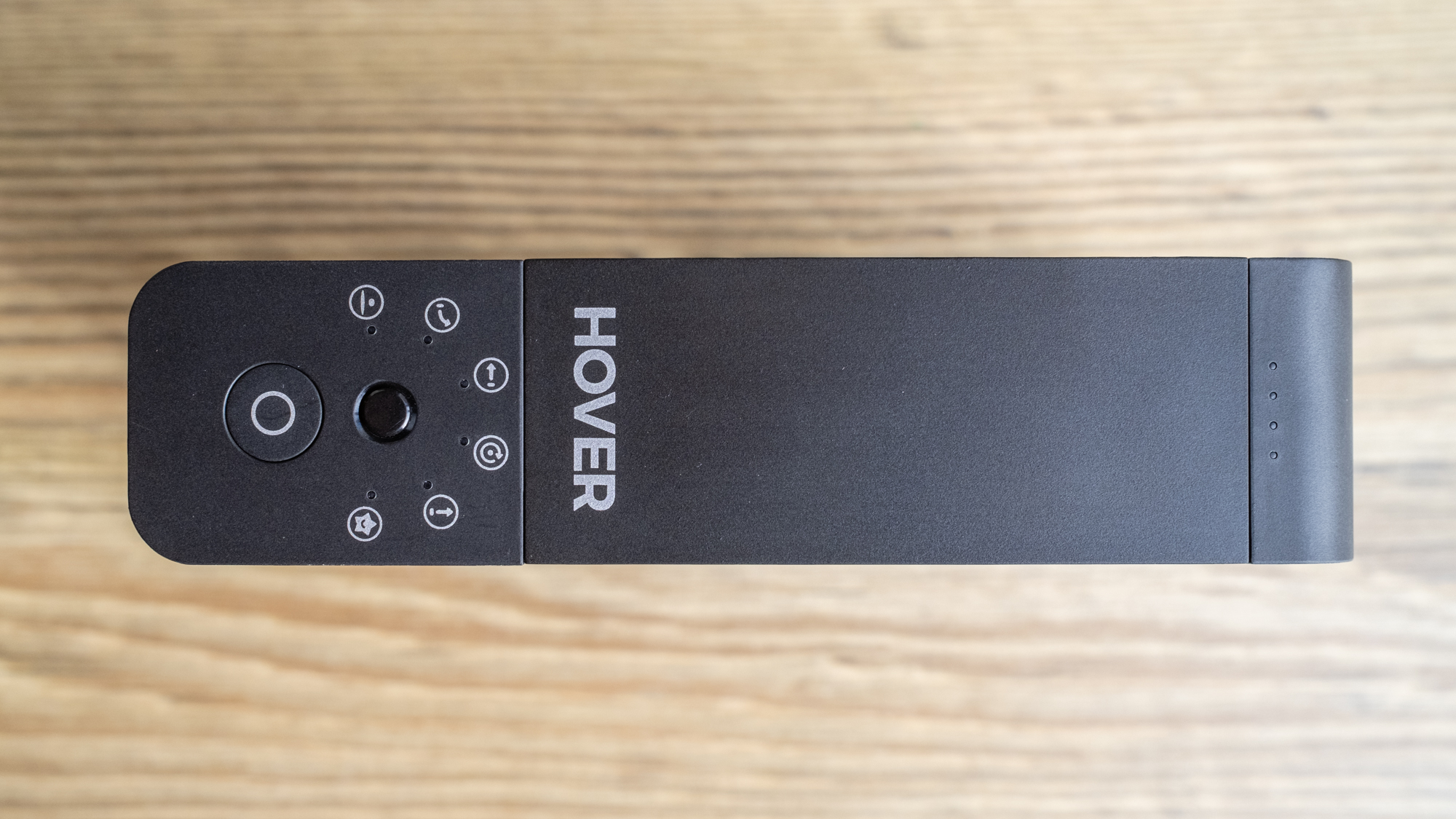
- Excellent subject tracking capabilities
- Up to 2.7K video & 12MP photos
- Automatic camera
The intelligent flight paths on offer include Orbit, Follow, Reveal, Overhead, Hover and Custom. The Custom flight paths available are Dolly Track, where the X1 faces you and flies backwards, and Snapshot, where the X1 flies in front of you and takes a photo. These must be set in the Hover X1 app, and when using the X1 independently of the app, the last used Custom path remains active in the custom slot.
The intelligent flight paths are highly effective, and although the X1 doesn't feature GPS or collision avoidance, the VIO Positioning System (Visual Inertial Odometry) works exceptionally well, with subject tracking working like magic; although you do have to take care with obstacles in the path of the X1, and if it senses an obstacle, it most often simply lands on the ground.
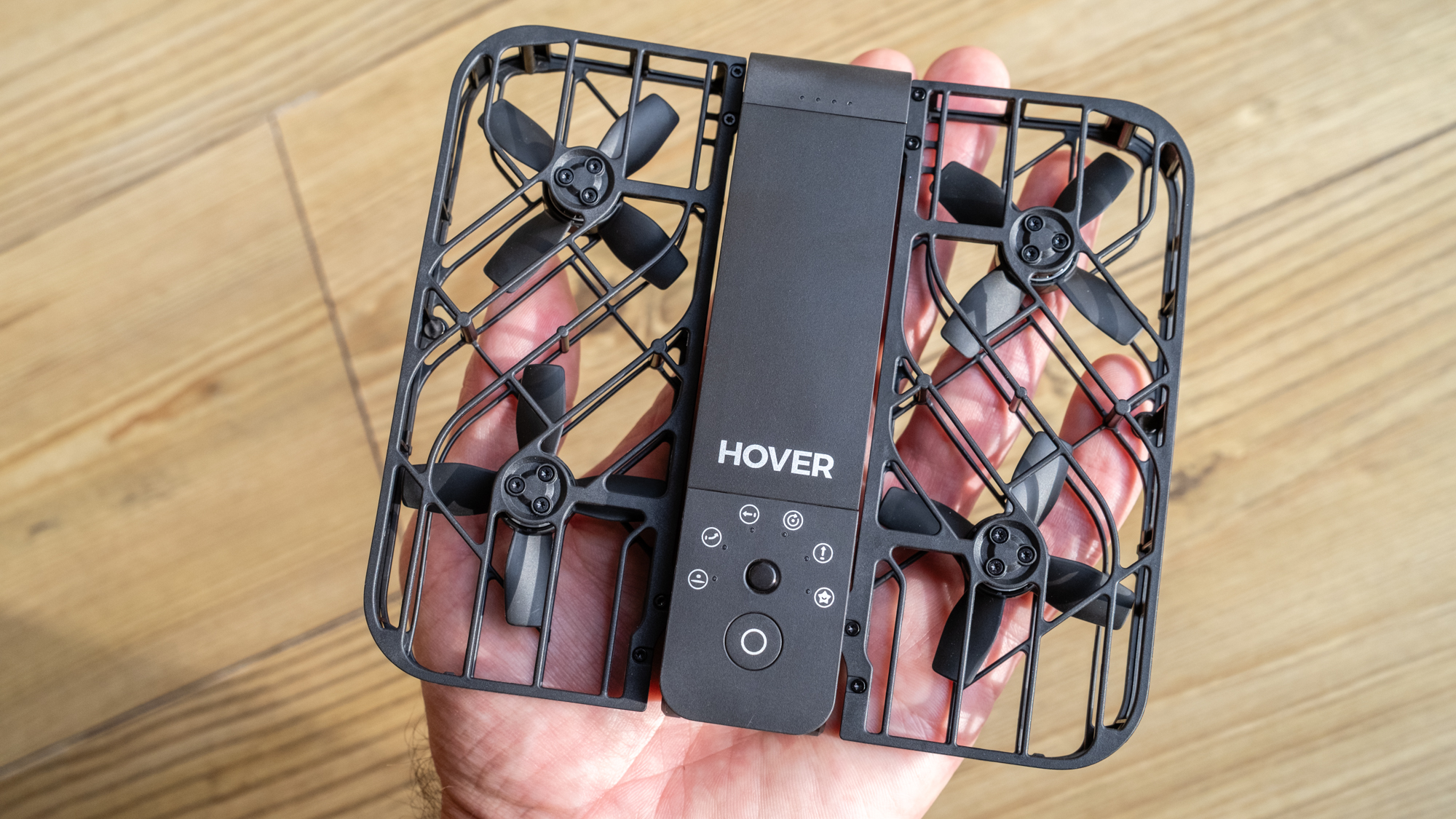
The camera is extremely basic and automatic with virtually no control available. Image quality is best when shooting in brighter conditions, with noise visible in videos and heavier processing when ISO is raised automatically by the camera. For photos, you can only switch between Standard (single shot) and Burst, which are captured in JPEG format at 12MP.
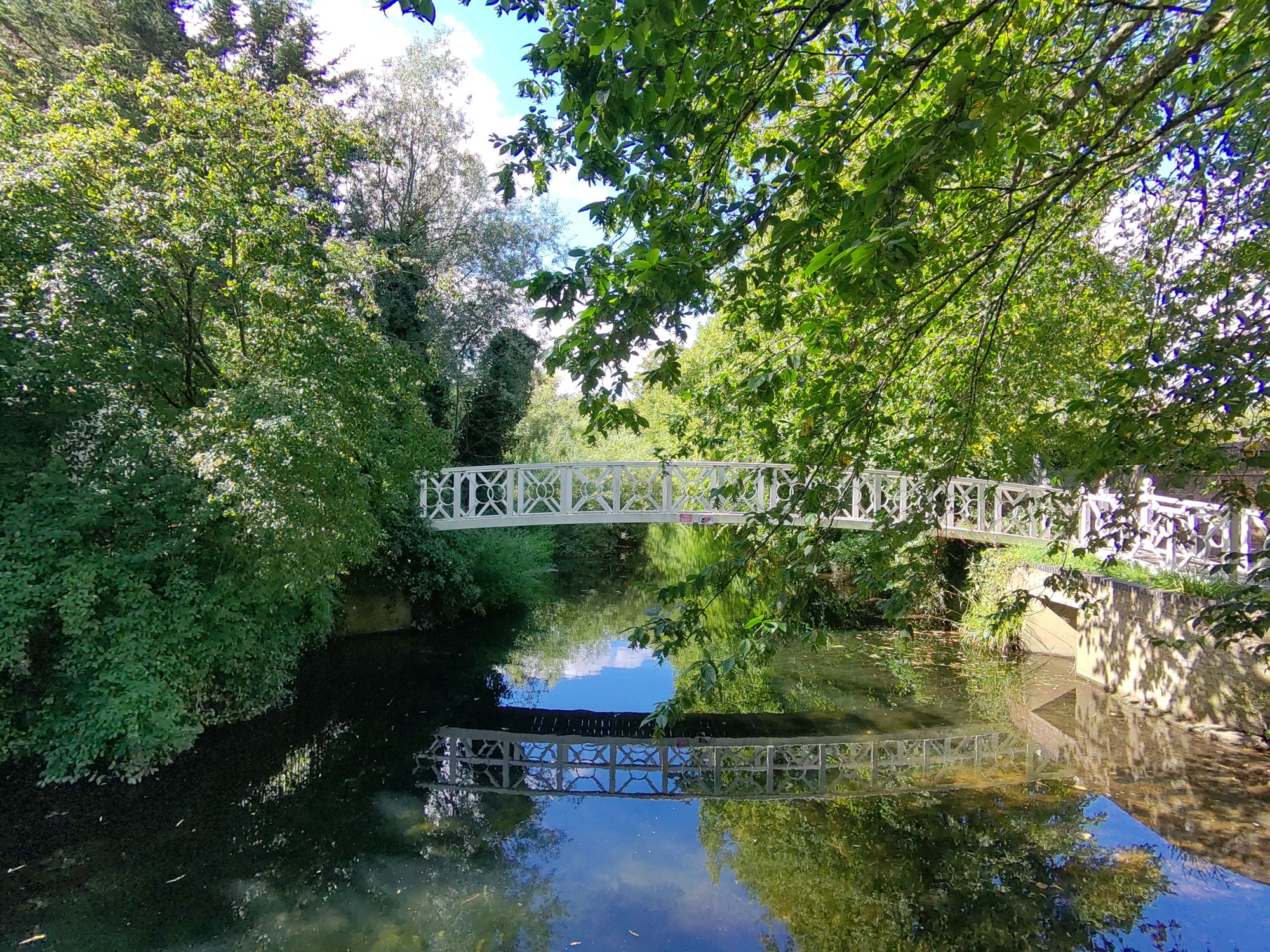
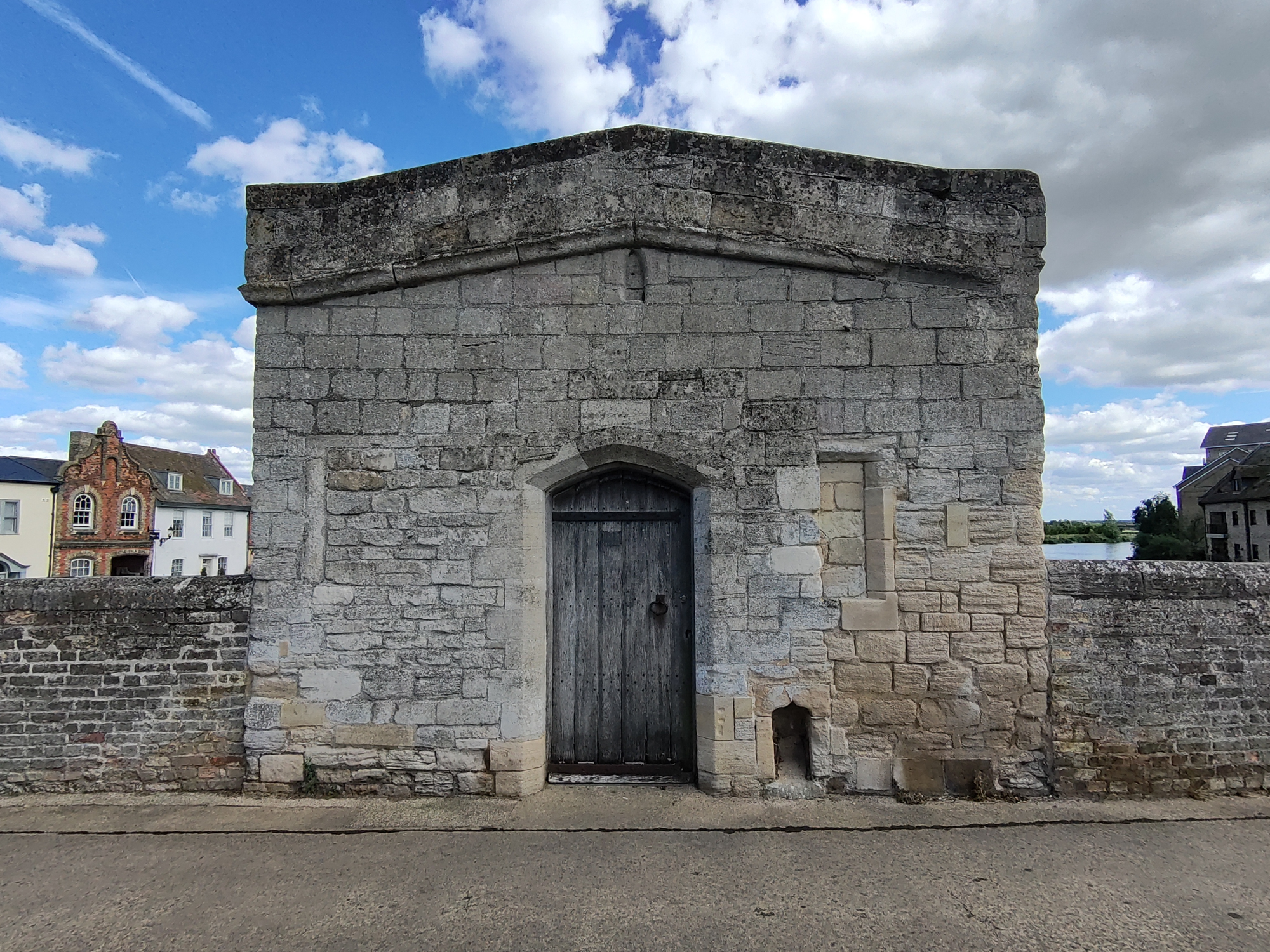
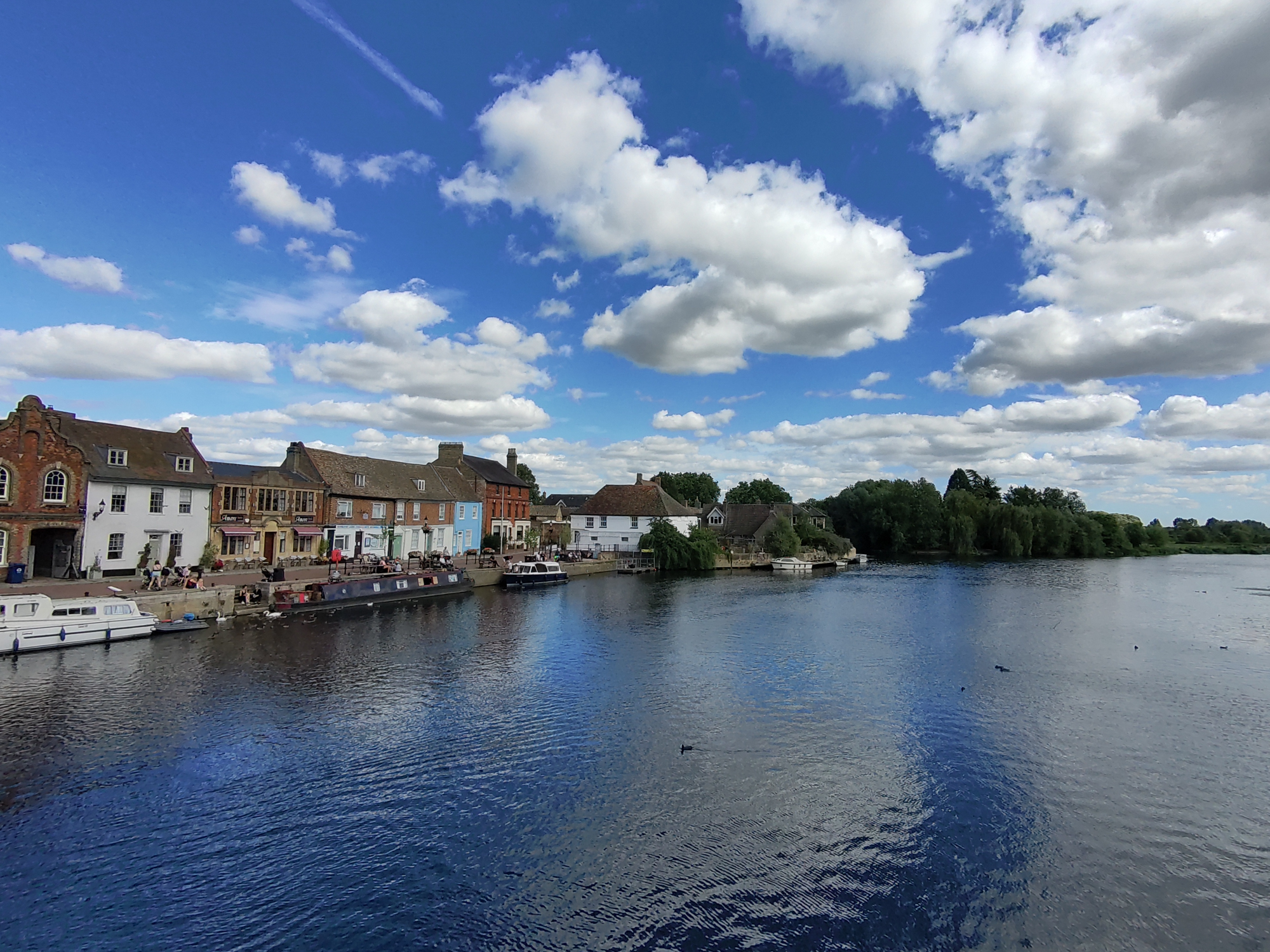
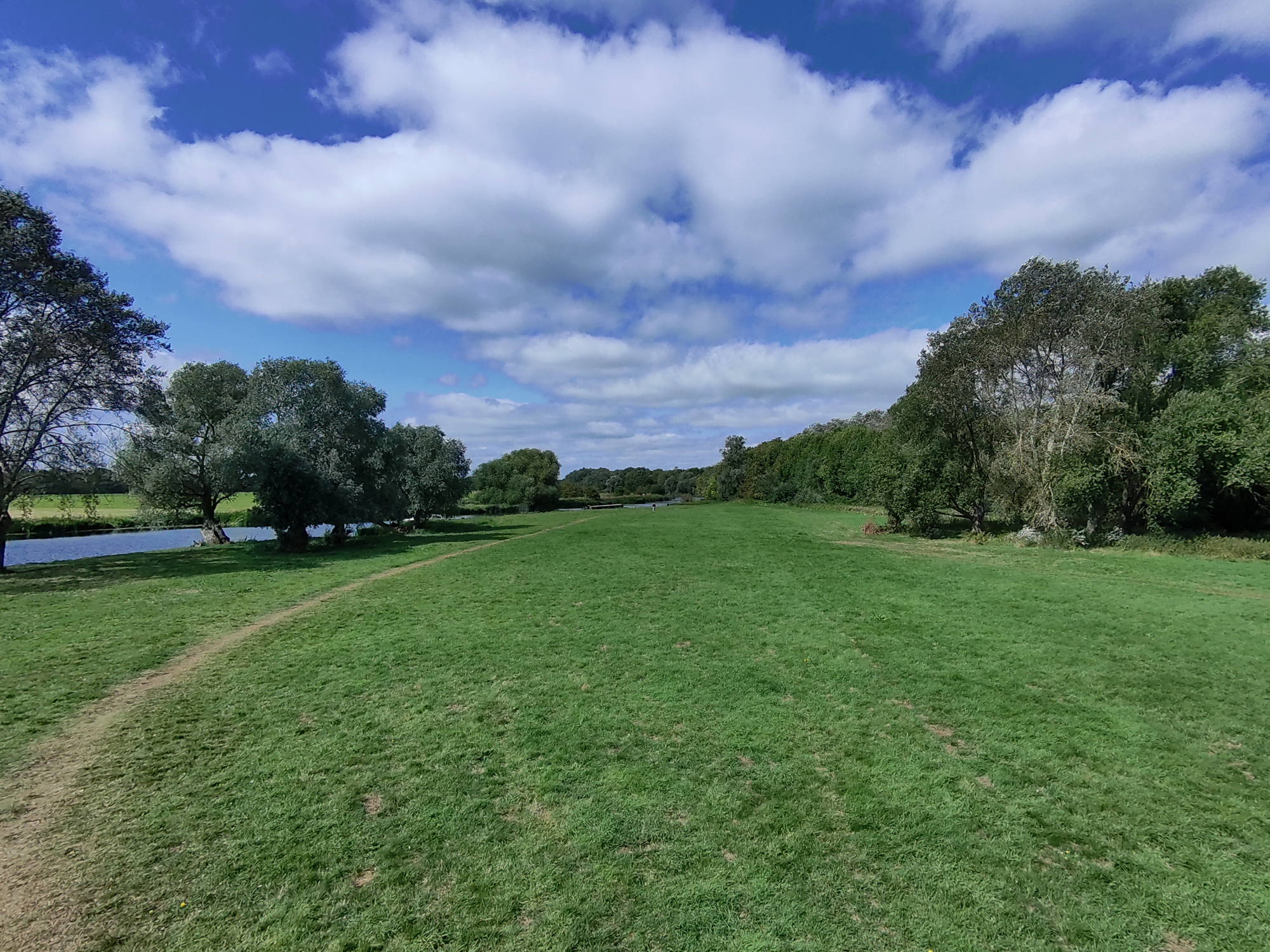
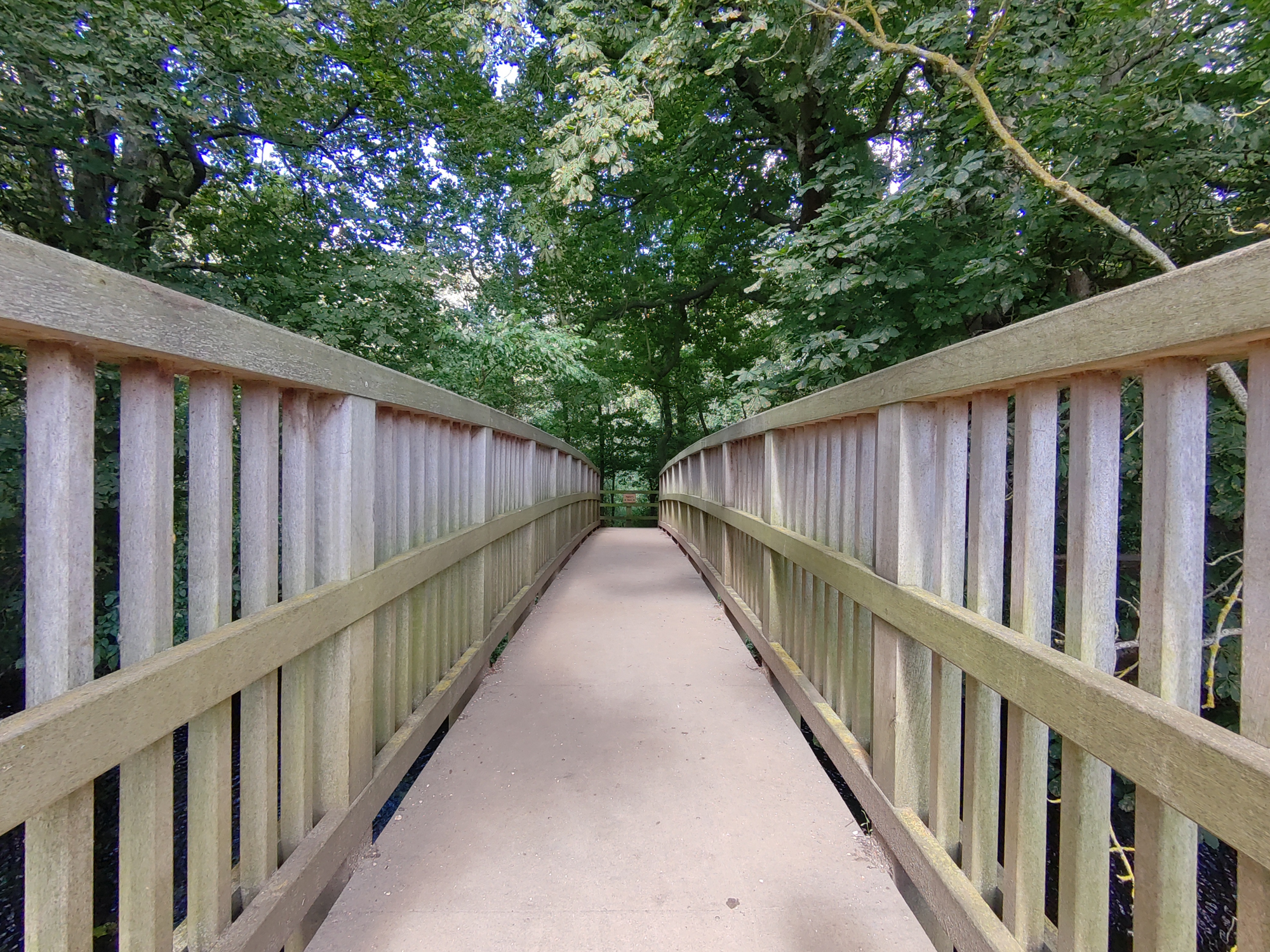
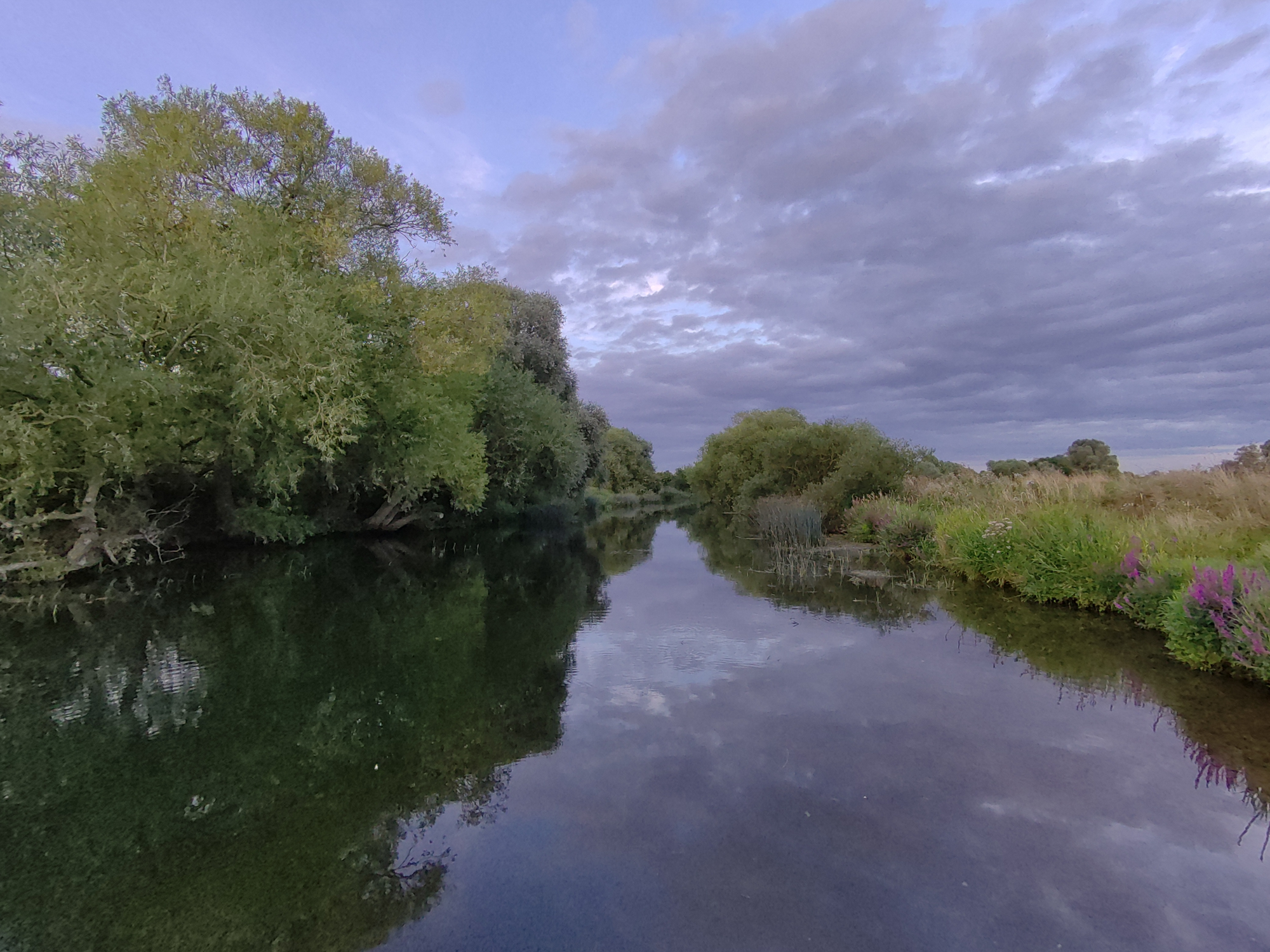
For video, you can only switch between 2.7K at 30 fps, 1080p at 60 fps and 1080p (HDR) at 30 fps, so the X1 is incredibly easy to use. Video quality is better than photo quality, and it stabilizes footage extremely well using a combination of the 2-axis gimbal (tilt axis) and Electronic Image Stabilization, although Jello (image wobble) can appear in videos when shooting in stronger winds close to the X1's maximum wind resistance.
HoverAir X1 review: Cost
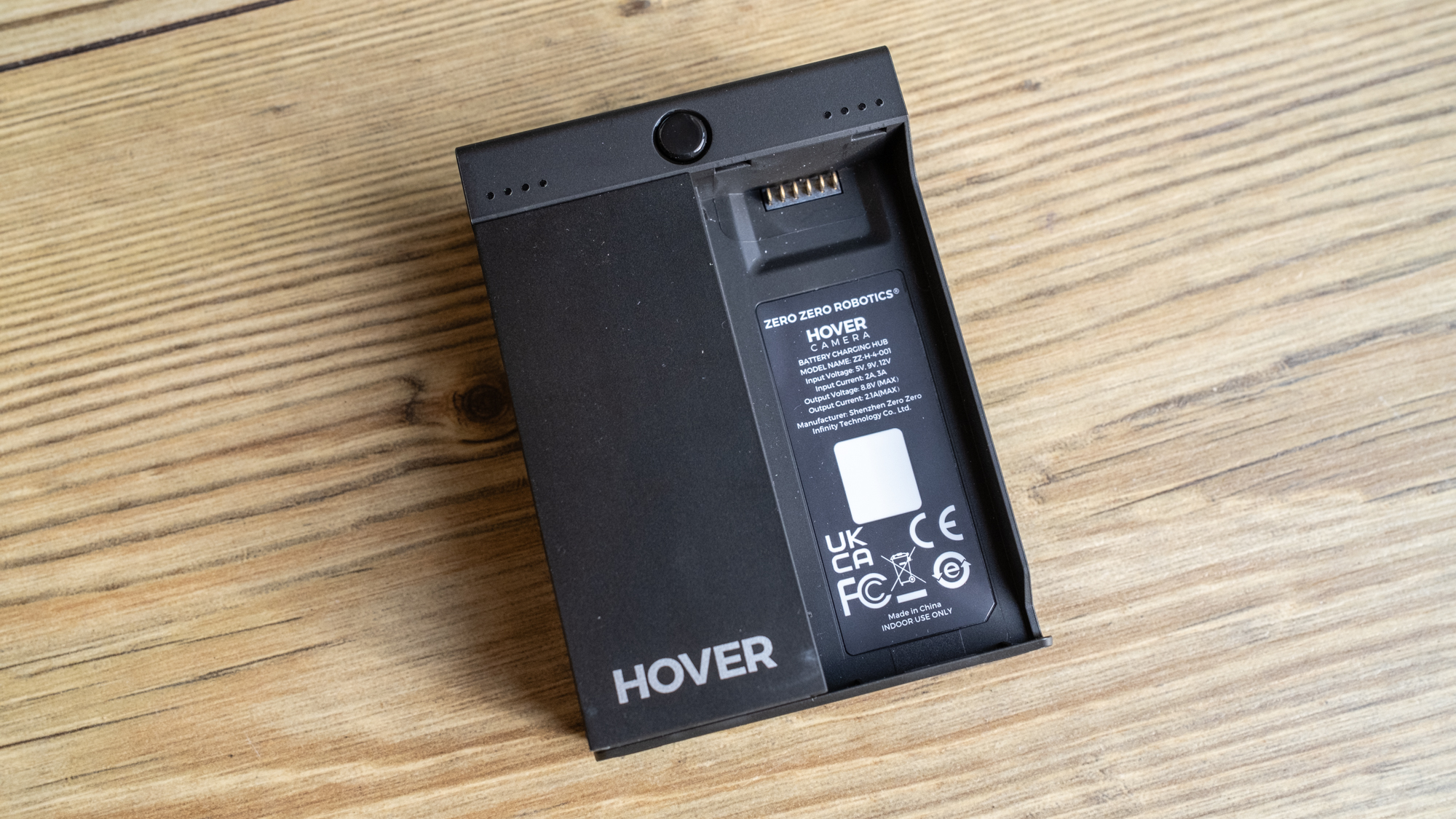
- Available in two kits
- Available on Amazon soon
- Similar price to DJI Mini 2 SE
The Hover X1 is arguably a little expensive considering it's essentially a selfie drone. But saying that, the X1's small size, light weight, ease-of-use, safety features and overall performance make it a unique option with features unlike mainstream drone models. Plus, the ability to take off and land in the palm of your hand means that you can use it practically anywhere – within local drone laws and regulations, of course.
The X1 is available in black or white and there are two kits to choose from. These include Device Only, which comes with one battery, a USB-C cable for charging and a drawstring bag for storage and transportation for $349 / £345 / €388. The Combo kit includes all of the above, a two-battery Charging Hub and a second battery for $399 / £395 / €448.
The Combo kit is by far the best value for money and provides both faster charging and extended flight times thanks to the second battery. At the time of writing, the X1 is only being shipped to the United States, United Kingdom and Germany, but it will be available on Amazon from late September/early October 2023.
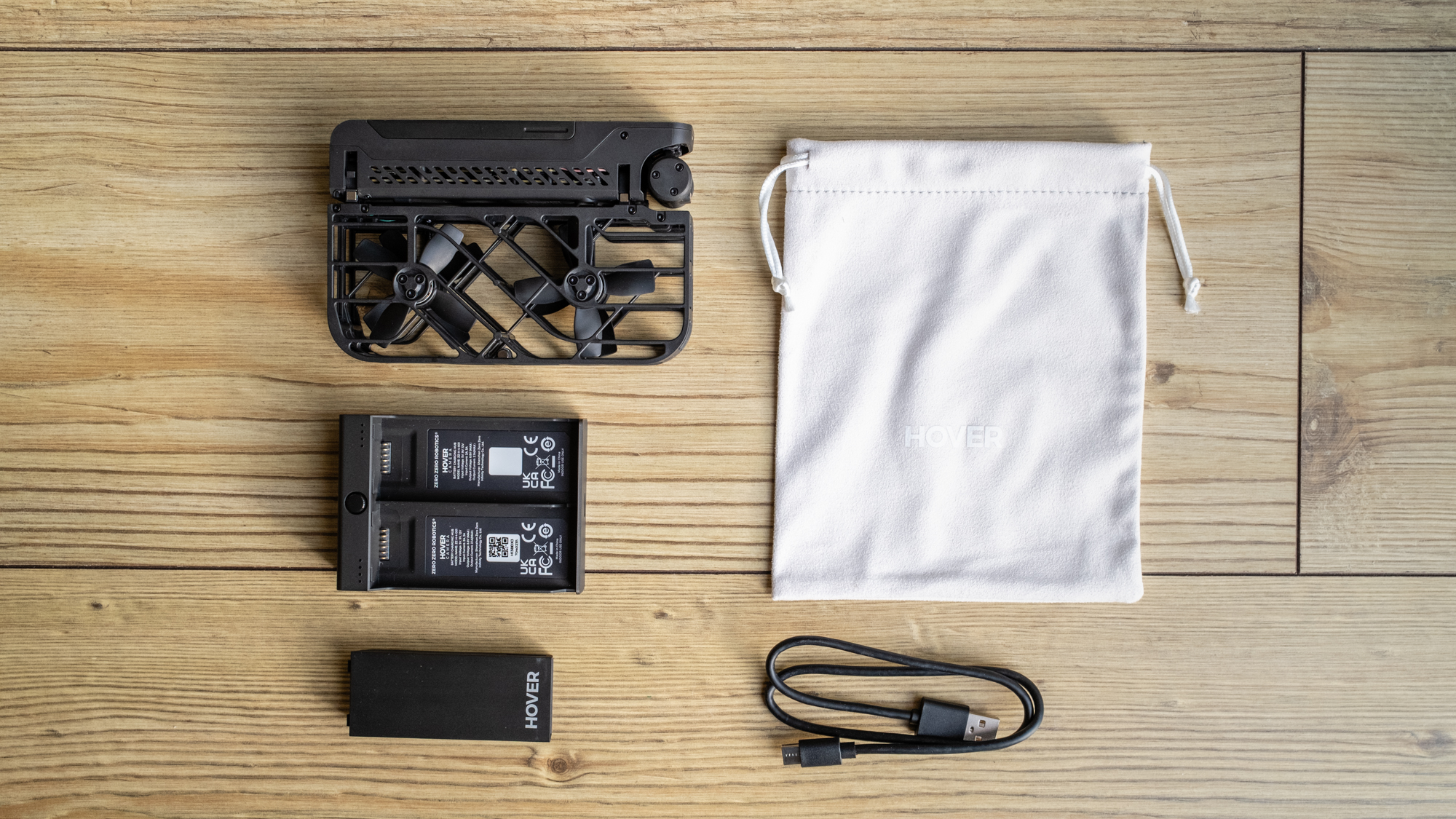
Should you buy the HoverAir X1?
There's no getting away from the fact that the Hover X1 is a lot of fun and takes all of the hard work out of drone flight thanks to the intelligent flight paths that track you effectively whether you're static or moving.
The X1 is undoubtedly a niche drone, but it can be set up to fly and capture video using autonomous flight in a matter of seconds. So, if this is the kind of functionality you're looking for in a drone, you need look no further.
If the HoverAir X1 isn't for you
The Hover X1 is a fantastic drone for capturing tracking shots of yourself if this is your main aim. But if you'd prefer a drone with vastly improved manual flight capabilities alongside greater camera control for photos and videos, you'll have to consider a standard camera drone.
If you're on a budget but would like to enjoy the best image quality available at the lowest cost, the sub-250g DJI Mini 3 is the perfect option. And for those on a tight budget, the DJI Mini 2 SE is only marginally more expensive for the single battery kit and also captures up to 2.7K video.
If you have a larger budget and would prefer the best image quality available in a consumer/prosumer drone, the DJI Mavic 3 Classic features a Four Thirds Hasselblad camera with an adjustable aperture. What's more, this drone is packed with additional features and is much more powerful than DJI Mini-series drones.
Join our Space Forums to keep talking space on the latest missions, night sky and more! And if you have a news tip, correction or comment, let us know at: community@space.com.
James is an award-winning freelance landscape and portrait photographer, as well as a highly experienced photography journalist working with some of the best photography magazines and websites with a worldwide audience. He’s also the author of The Digital Darkroom: The Definitive Guide to Photo Editing. www.jamesaphoto.co.uk
